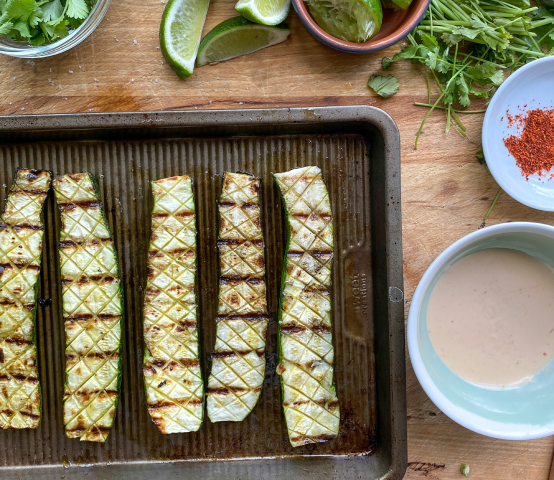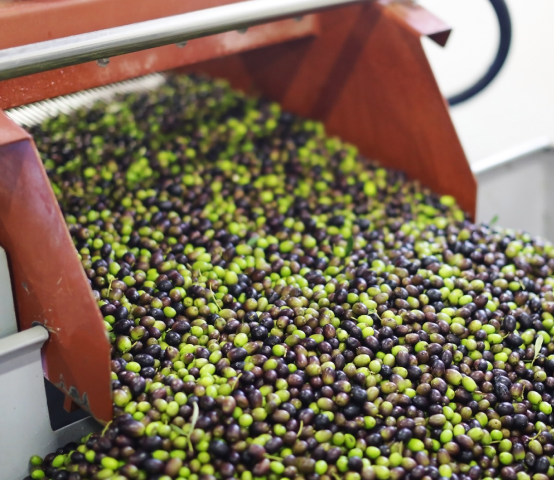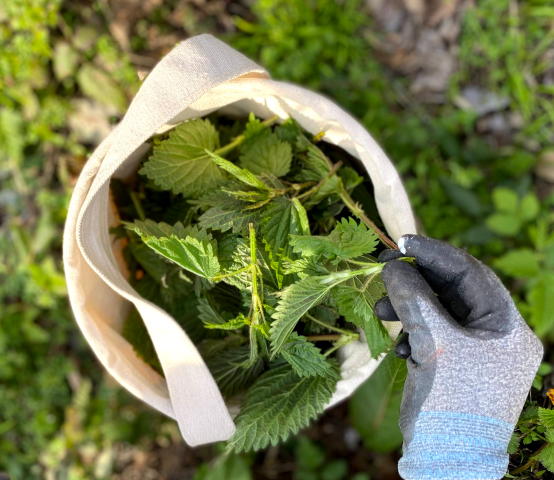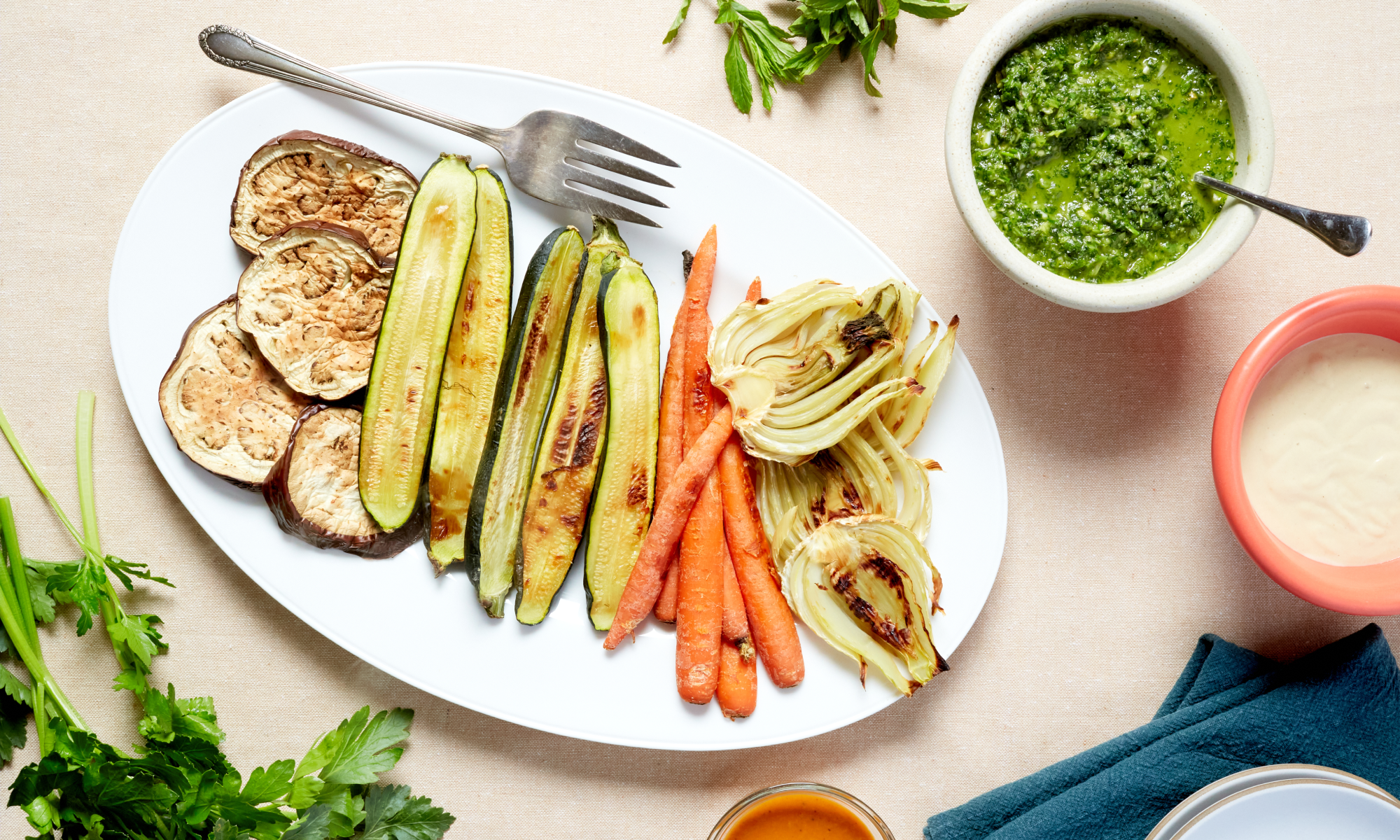
Here’s one of my secrets for a dinner party: make a big platter of roasted vegetables with a few sauces. They’re relatively cheap, you can get the prep and cooking done hours before the guests arrive, they’re very tasty, and everybody should eat more vegetables. And while sometimes all they need is a drizzle of olive oil and sprinkle of flaky salt, a trio of sauces provide even more flavor and impress the guests, too.
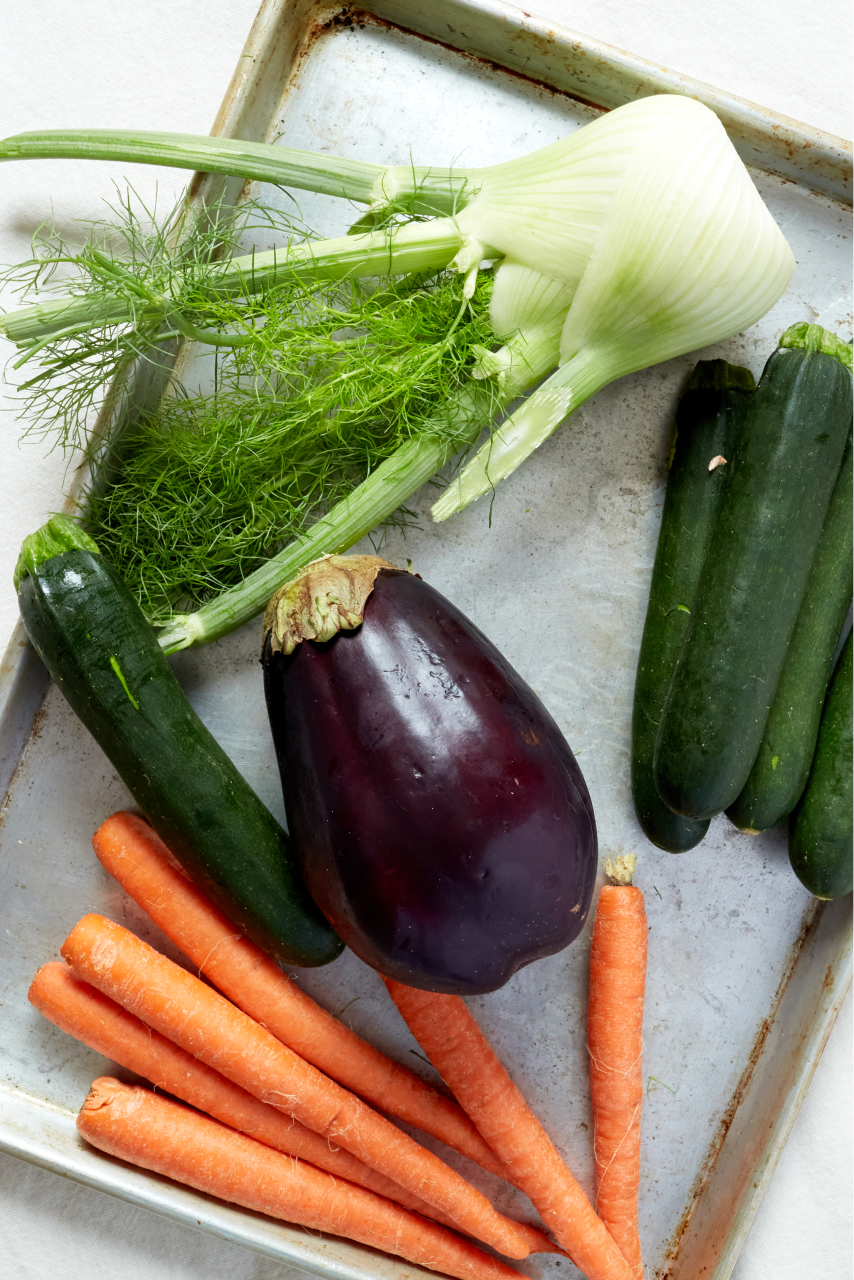
The roasting part is easy. After cutting the vegetables into the pieces that make both cooking and eating smoother, just spread them out on a sheet pan. While every “recipe” for roasting vegetables includes instructions for coating them in oil, I’ve recently extended my infamous grilled vegetable manifesto to include roasting. The TLDR of the GVM is simple: they don’t need the oil.
I’ve been roasting on a dry sheet pan or skillet for months, and the vegetables don’t stick, and they brown nicely. A sheet of parchment paper makes cleaning even easier, but without the oily residue washing the sheet pan isn’t really a chore.
I almost always include zucchini. It’s widely available most of the year, and even better during the summer when I can shop at the farmers market for varieties like romanesco, with its hexagonal cross section, or other summer squash such as patty pan or yellow crookneck. Whichever you have, slice them in half from the stem to the blossom end. Do the same thing with carrots.
Eggplant divides eaters, but I love it and like to show the haters how good it can be. Long skinny specimens can be split like zucchini, but slice the round globe varieties in disks about a half inch thick. Skip the salting and draining, though. Eggplant haven’t been bitter for decades, and while it does draw out enough moisture to change the texture, I’ve never found the process to be worth the time or effort.
For a sense of the exotic, I’ll include fennel. It’s mild, anise-like flavor gets more subtle and mellow with roasting. Trim the stalks and fronds (the stalks can go into vegetable stock, the thin fronds can be chopped and sprinkled over the fennel after it’s roasted), then cut the bulb into slices from top to bottom. The ends pieces will be small and irregular, but roast them too.
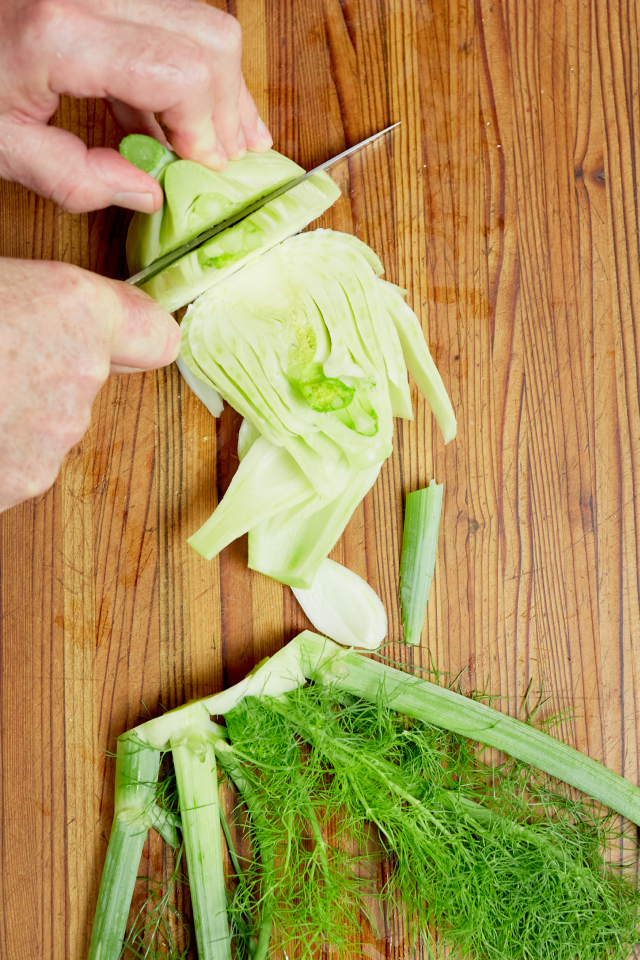
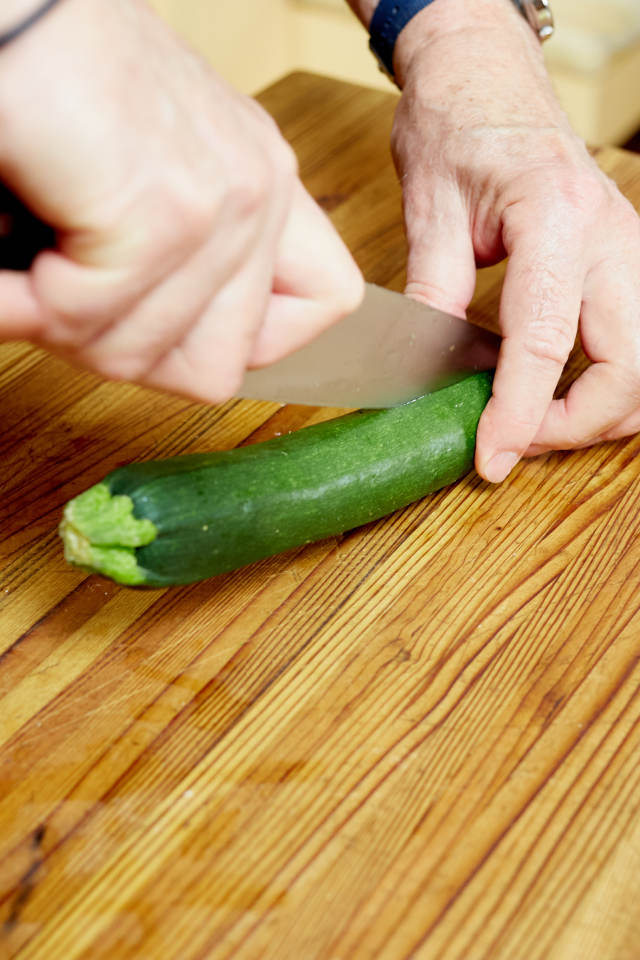
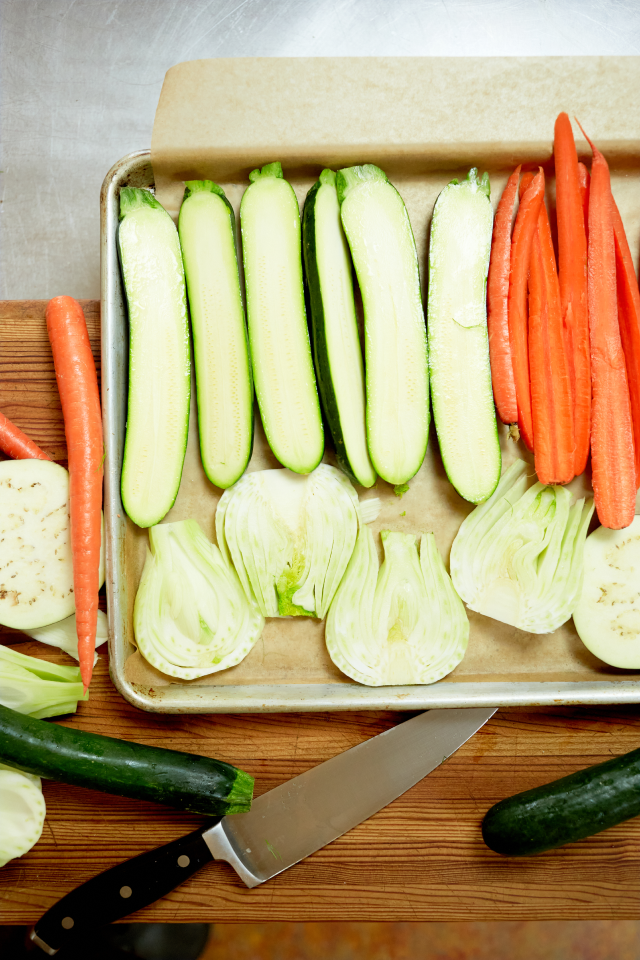
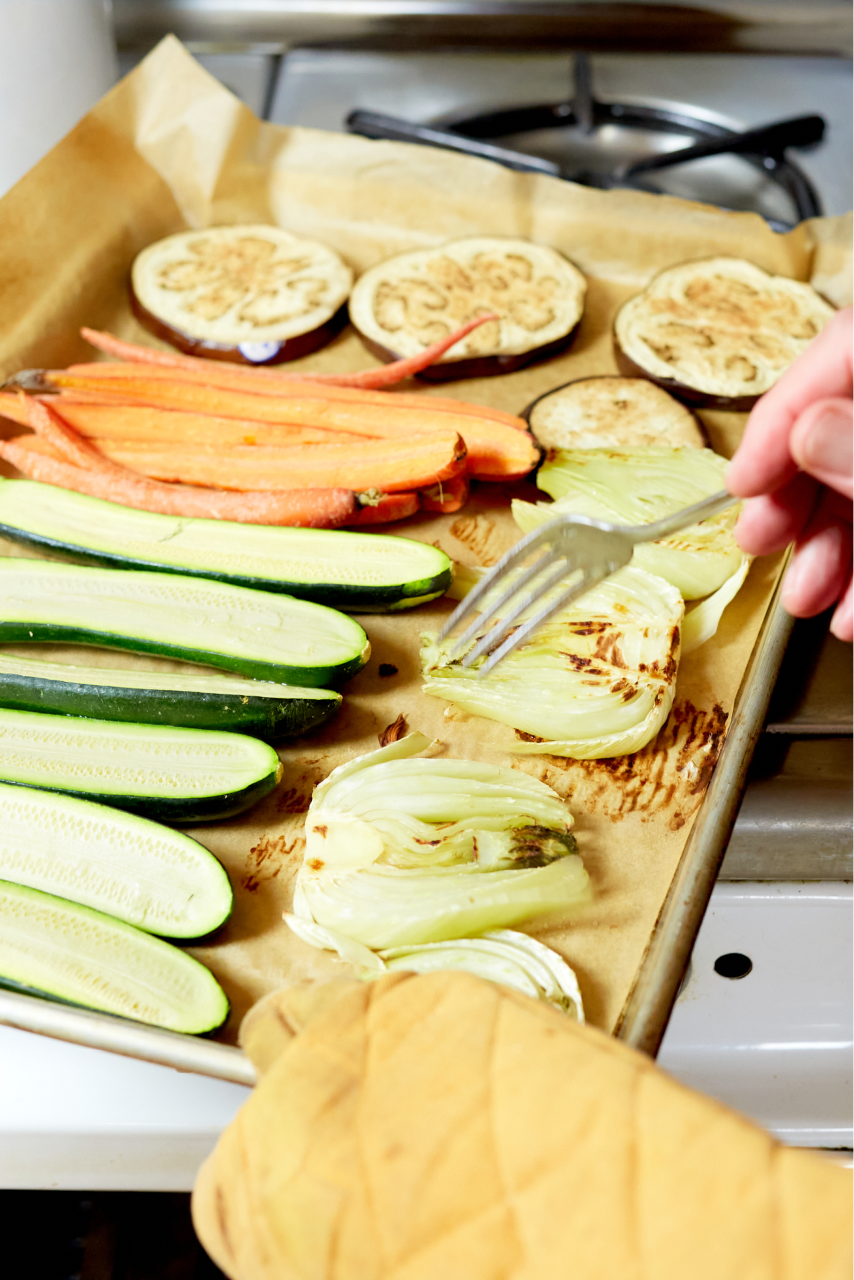
Spread everything onto a sheet pan or two (use parchment paper for even easier cleanup) and roast at 400F for 10-15 minutes. Flip the vegetables over and roast for another 10 minutes or so. Transfer to a platter and let them sit while you make the rest of the meal; roasted vegetables are best at room temperature.
Only one of the three sauces, the Southeast Asian Green Sauce, requires much work, and it’s really just a bit of chopping; cleaning the food processor takes about the same time. The tahini dip only takes a few minutes of stirring, and Bobbie’s Boat Sauce comes right out of the bottle.
Southeast Asian Green Sauce
This sauce uses the flavors of Southeast Asia, but it’s just as tasty on tacos and almost anything.
Tahini Dip
Use this as a dip for vegetables, chips, or almost anything that needs a little more flavor. Double the amount of olive oil to make it a little less viscous and it makes a great dressing for composed salads.



